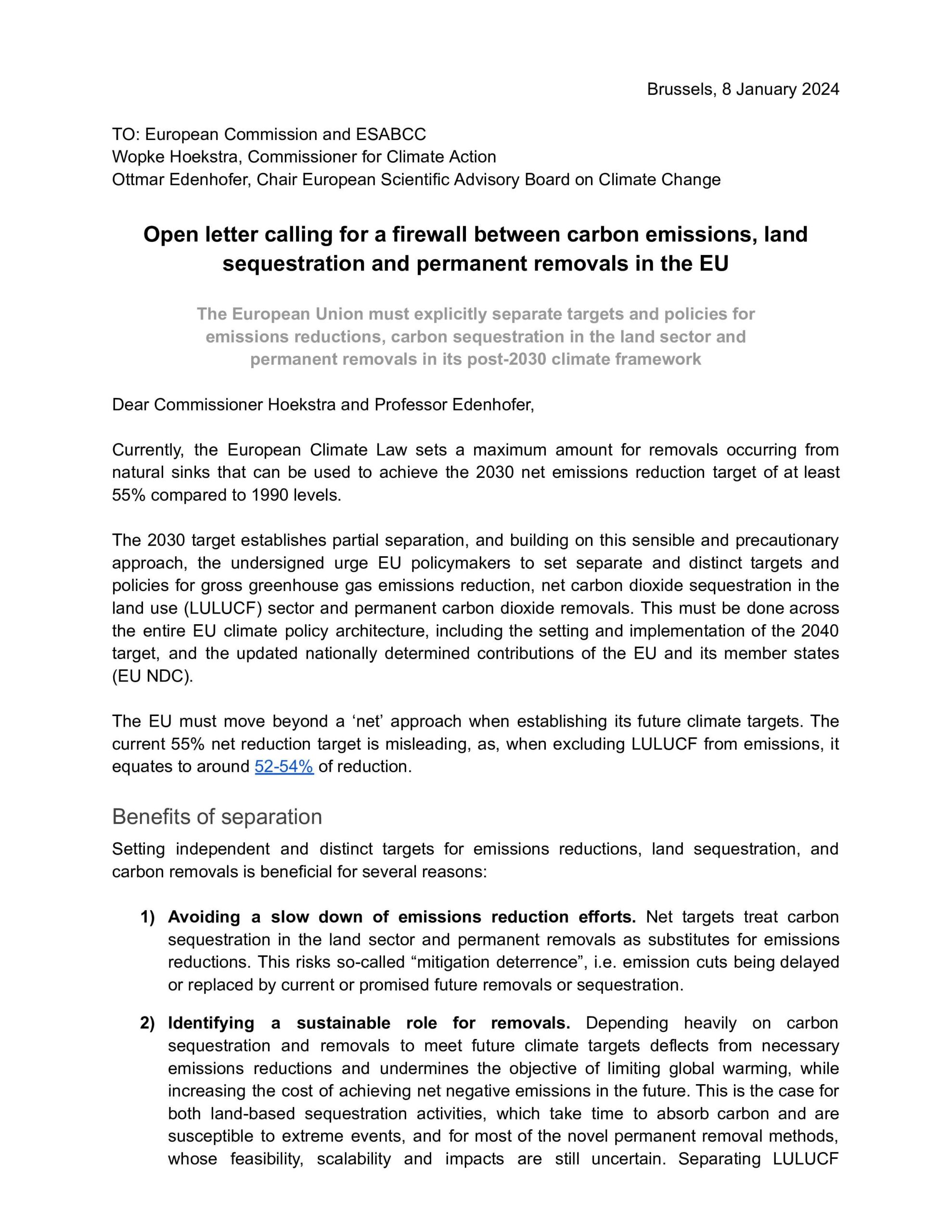Sandbag co-signed an open letter sent to the European Commission by 114 leading academics, businesses, civil society organisations and research institutions urging the EU to set explicit and separate targets for greenhouse gas emissions reductions, land-based carbon dioxide sequestration and permanent carbon dioxide removals in the EU’s post-2030 climate framework.
Setting distinct targets will reduce the risks of overdependence on permanent carbon dioxide removals (CDR) and ensure that emissions reductions remain the EU’s priority. In turn, it will also help provide clarity and certainty for the carbon removals sector. Distinguishing greenhouse gas emissions reductions from permanent carbon removals is also important to better evaluate the costs involved. As discussions progress regarding the potential future inclusion of permanent CDR in the EU Emissions Trading System (ETS), it is essential that they are treated separately from other, more urgent policy initiatives to tackle hard-to-abate greenhouse gas emissions.
“We cannot afford to slow down efforts to cut emissions and phase out fossil fuels. The upcoming Communication on the EU climate target for 2040 provides a key opportunity to reaffirm the EU’s ambitions and strengthen climate governance” says Aymeric Amand, Policy Officer at Sandbag.
Read More:
Simulating CDR in the EU ETS: The Risks of Premature Integration
The EU’s 2040 climate targets suggest integrating carbon removals into the ETS — but at what cost? This report uses Sandbag’s simulator to assess whether the risks of premature CDR integration outweigh the benefits.
In or Out: What’s best for carbon removals and the EU ETS?
What will the future of the EU Emissions Trading System (ETS) look like as the emissions cap heads towards zero? Is integrating carbon dioxide removals (CDRs) into the ETS a solution to help the EU achieve its climate goals? Or would they compromise the integrity and functioning of the system? These questions are at the forefront of the Commission’s mind as they review different options for the future of the ETS ahead of the 2026 revision.



